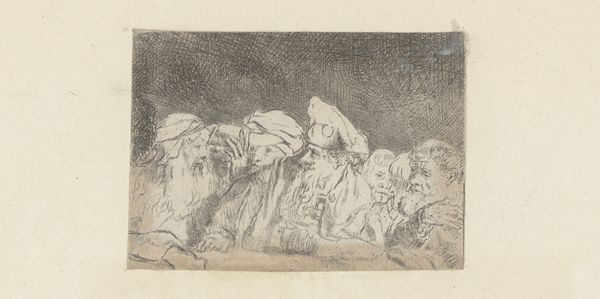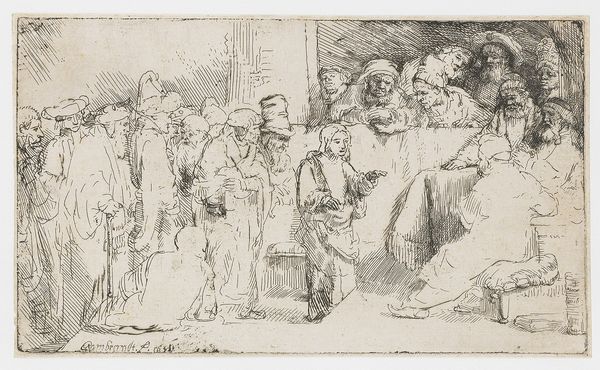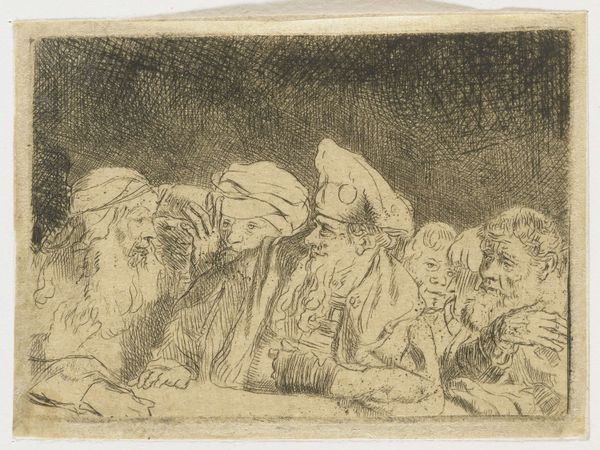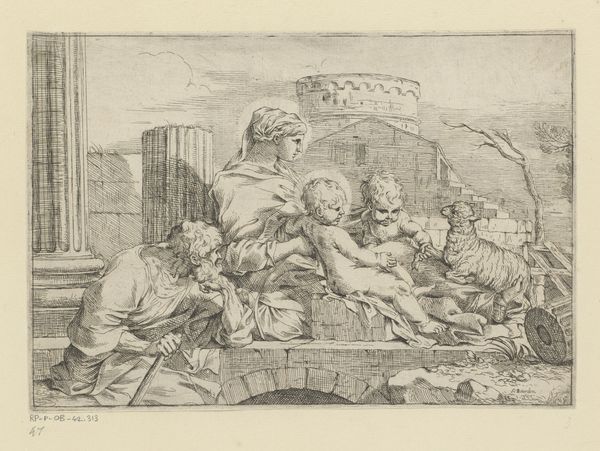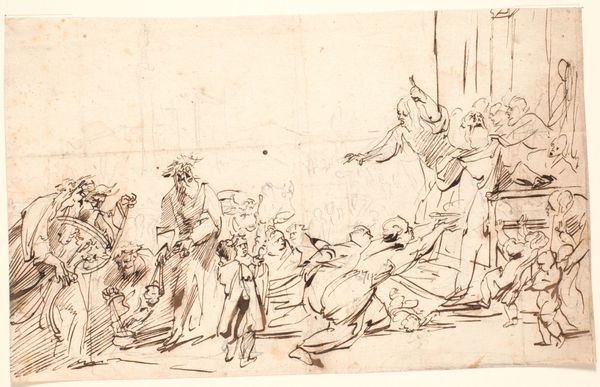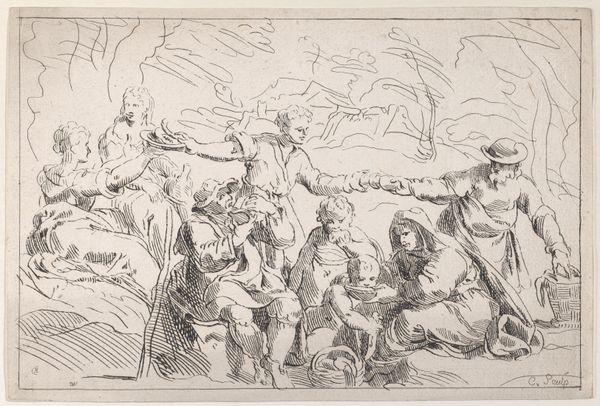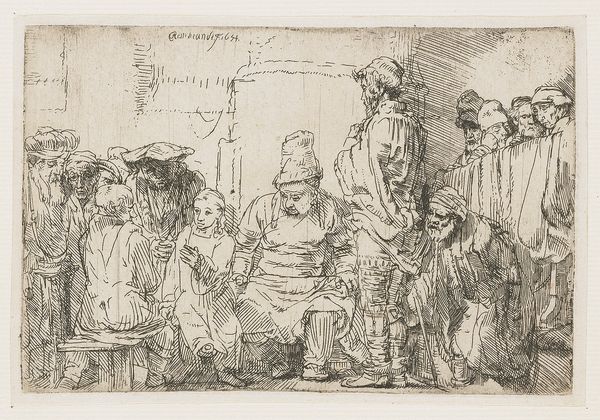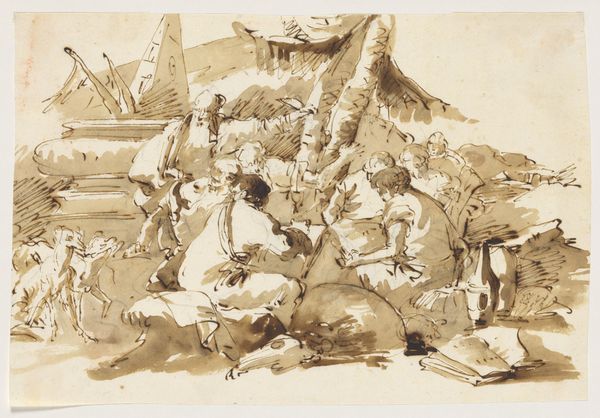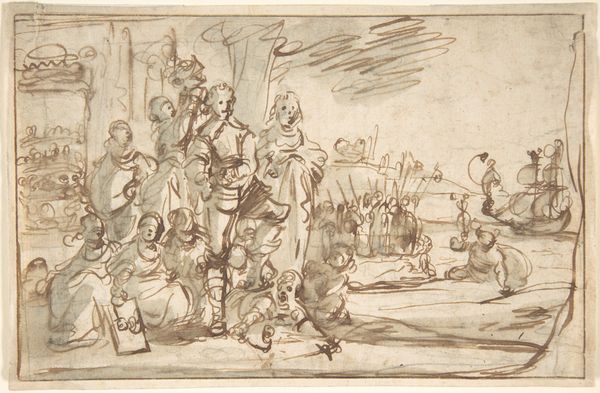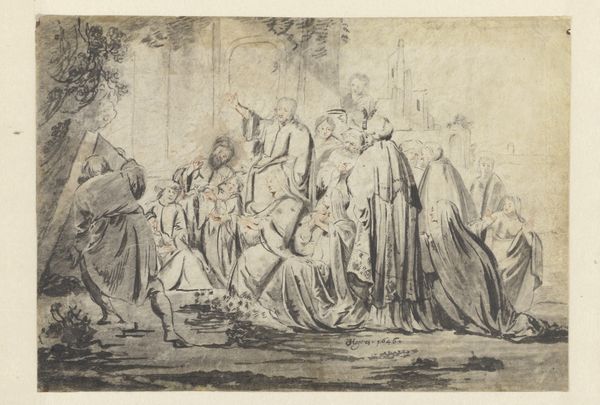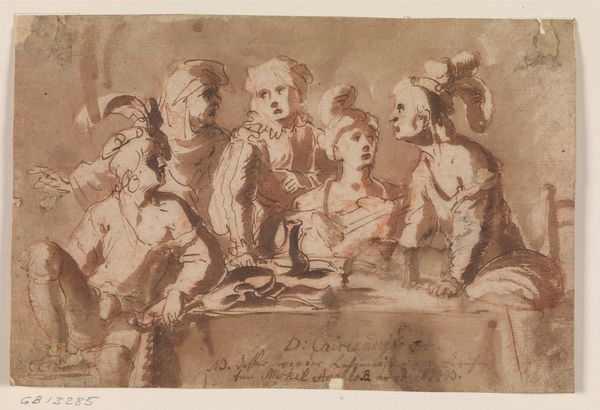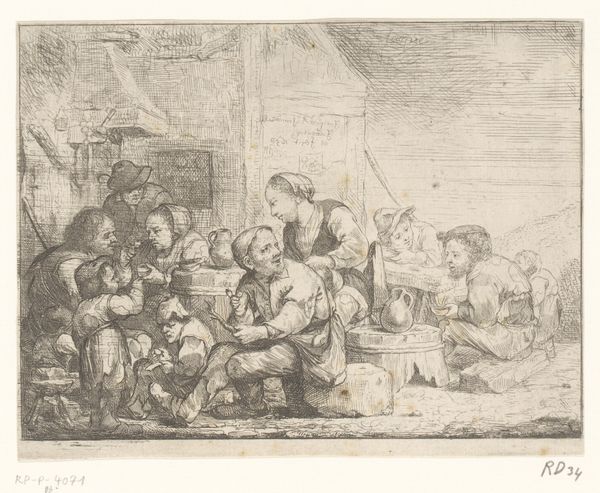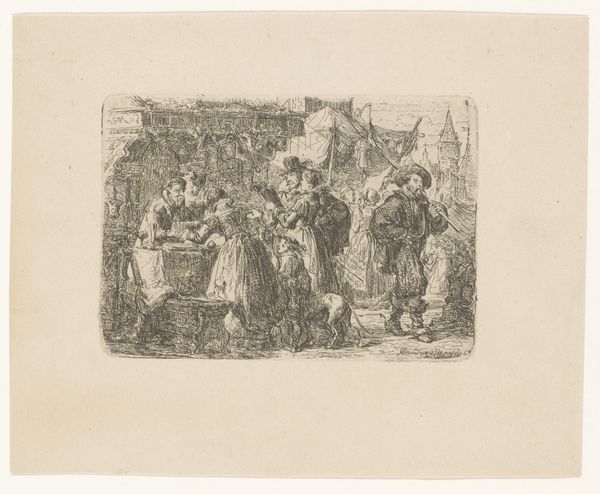
Copyright: National Gallery of Art: CC0 1.0
Curator: Hogarth’s engraving, “A Fellow of Maudlin,” created in 1784, offers a rather biting social commentary. What are your initial thoughts on this crowded scene? Editor: Visually, it strikes me as a study in textures. The sheer volume of fine lines that describe each character’s face, their clothing… the print’s dense materiality practically hums with activity. Curator: Hogarth frequently used his art to critique the power structures of his time. "A Fellow of Maudlin" satirizes the elitism and perceived intellectual vanity of Oxford University dons. How does the work contribute to conversations about class and education? Editor: Consider the implications of reproducing this image on a relatively accessible medium like engraving. Hogarth’s technique makes this critique of power available for broader consumption and discourse outside elite circles, extending the material into various spaces of debate. Curator: Absolutely. The exaggerated features, the almost grotesque depictions of these academics, serve to undermine their authority, making them objects of ridicule rather than reverence. How does this imagery resonate with the prevailing sociopolitical sentiments of 18th-century England? Editor: You can't ignore the symbolism embedded in their dress and setting. The opulence contrasted with the avarice etched on their faces invites analysis. We are prompted to explore the relationship between the consumption habits and the societal role of academia. Curator: And what do you make of the choice of the grotesque as a strategy? I think it accentuates an 'us' versus 'them' dynamic. Hogarth invites the viewer to laugh at, and therefore feel superior to, these figures of supposed wisdom. It’s about who gets to define the boundaries of taste and respectability. Editor: Beyond representation, it prompts us to think about Hogarth’s workshop. What was his labor like? Who assisted him? And, crucially, where were the sites of consumption for such a print? All these avenues contribute to a holistic understanding. Curator: Thinking about it all now, Hogarth successfully holds up a mirror to his society, reflecting both its accomplishments and its hypocrisies through a sharply critical lens. Editor: Indeed, from process to politics, this work resonates far beyond the confines of art history.
Comments
No comments
Be the first to comment and join the conversation on the ultimate creative platform.
